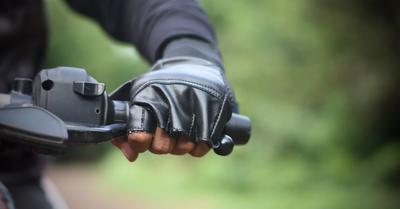What Is An Automatic Transmission?
An automatic transmission is a device that disengages the engine from the crankshaft using torque converters to quickly disengage the engine from the crankshaft wheel to switch gears, or it uses a dual-clutch system to even more quickly switch gears by essentially using two transmissions in a synchronous union.
General Motors (GM) launched an automatic transmission in 1934 and was the first to use hydraulic power to change gears. The fluid coupling converter uses the pressure of hydraulic fluid to connect the engine to the transmission and shift the gears. The power of the engine drives the pump in the torque converter by sending power via hydraulic transmission fluid to the turbine. The central shaft of the turbine is under pressure from the fluid and rotates transmitting power to the first planetary gear set. The oil pump pressurizes the fluid depending on the tire revolution and speed of the vehicle (RPMs) allowing the gear pump to switch gears automatically. This oversimplified explanation is only meant to inform the reader that none of this is happening in the Zero motorcycle.
What Is The Difference Between An Automatic And A Zero Transmission?
Do Any Motorcycles Have An Automatic Transmission?
While rare, a few motorcycles do have automatic transmissions. From large touring bikes where engine size and weight are not an issue when adding a heavy transmission to off-road adventure bikes where it is inconvenient and even dangerous to shift gears while traversing terrain loaded with hills, bumps, and jumps.
However, contrasting and controversial disagreements abound about whether it is breaking a bike code to have an automatic motorcycle transmission. Old schoolers think automatic transmissions on a motorcycle like the Honda Goldwing DCT and the Africa Twin DCT are blasphemous. It’s just not a motorcycle without the squeeze of the clutch on the left handlebar and a foot shifter.
Does The Zero Motorcycle Technically Have An Automatic Transmission?
For about a decade commercially sold electric motorcycles have infiltrated the motorcycle world, but many are still confused as to what they actually are. Some influential authorities purport that the electric motorcycle, including the Zero, has an automatic transmission. But words and labels need proper definitions, and the definition of an automatic transmission assumes gears which the Zero doesn’t have.
In an automatic transmission, hydraulic power changes the gears through pressurized transmission fluid to a gear pump. The gear pump is between the planetary gearset and torque converter which is connected to the engine’s flexplate. The engine’s RPMs dictate the pressure levels and the gear changes. None of this is true for the Zero engine. It uses a completely different system to increase velocity. This futuristic technology is much more efficient and powerful.
Since the Zero motorcycle does not have gears, it does not need to “automatically” change them in a transmission case, and therefore, does not have an automatic transmission. An entirely new concept of an engine needs an entirely new set of labels and words to describe it. Using existing language which describes older generations of engines for newer completely different engines only confuses the audience.
What Propulsion System Does The Zero Use?
So, if the Zero motorcycle is not an automatic because it has only one gear, then the question becomes how does the power continue to increase the velocity of the bike with just one main wheel sprocket?
As you rev up the electric motorcycle by twisting the throttle on the right-side handlebar, you have a smooth, computer-controlled increase in power, torque, and speed. It is faster than the average combustible engined motorcycle with more torque and instant, hair-raising power. The Zero SR/F has 140 ft-lbs (190 Nm) with 110 horsepower (82 kW) at 5,000 RPM at peak power taking it to 124 MPH (200 Km/h). And all instantaneously. The Zero is equipped with several modes you can use to maintain control of this insanely fast bike, but on full power, it’s difficult to keep the front wheel down at take-off. The acceleration will beat a gas-powered bike (ICE) every time. One clear advantage is that it doesn’t have gears to go through.
Instead of pistons firing with gas and air, the EV uses a brushless DC permanent electromagnet powered by a lithium battery. These electric engines have synchronous magnets that are arranged in three groups and powered up in sequential order to make a rotating field in a fixed center of the motor casing.
The rotor at the center is a permanent magnet and the coils surrounding it do not rotate. They are fixed on the stator and achieve rotation by controlling the amount of electricity generating the magnetic field. So as the permanent magnet rotates, it is controlled in power and speed by the direction and the magnitude of the electrical current going into the surrounding coils.
It is far simpler than the ICE engine with 80 percent fewer moving parts. It is more efficient, less pollutant, and more powerful with faster acceleration. It is only limited by the battery which keeps its range around 200 miles. The charging of the battery can take various amounts of time depending on the package you purchase, but every year the charging system and batteries are improved. Without a typical transmission, the Zero motorcycle is not an automatic, but with a consistent, controlled, and simple velocity-accelerated electric engine, it is the future of two-wheeled vehicles.















